The stunning beauty of the Great Synagogue in Budapest is a major highlight of Jewish Budapest. However, don’t just focus on this grand structure. Also, take the time to explore the smaller Kazinczy Street Synagogue, discover Art Deco details and learn about Jewish culture through a guided tour for an insider’s perspective for a remarkable experience.
Table of Contents
Where to Start to Discover the Jewish Budapest
When you think of Jewish heritage in Budapest, the first thing that comes to mind is the impressive Great Synagoue, also knows as Dohány Street Synagogue, the largest synagogue in Europe. It’s a must-visit site that you cannot overlook. Inside, you can admire its beauty and pause for a moment of silence in remembrance of the tragic events that have affected the Jewish community.
PLAN YOUR TRIP TO BUDAPEST
Unlock the best of Budapest with the Budapest Card and enjoy free public transportation, access to the best museums, and relaxation at the famous Lukács Thermal Bath. For more info, read my review of the Budapest Card.
The best way to stay connected in Hungary is with a Holafly eSim, saving real money on data coverage. Finally, ensure your travels are worry-free by getting Heymondo travel insurance for essential peace of mind.
As you stroll through the Jewish Quarter, you’ll discover that there’s much more to this neighbourhood than just the main synagogue and the popular ruin bars. Walking around, you can learn how the Jewish culture blended in Hungary.
Be sure to visit the Kazinczy Street Synagogue, which features more traditional architecture, and keep an eye out for hidden Art Deco details that might go unnoticed by the untrained eye. There is really a lot to see, and if you’re not an expert, you might miss some meaningful connections to history and Jewish culture.
If you have enough time, I definitely recommend booking a guided tour. I visited the synagogue in Budapest and took a walking tour of the Jewish Quarter with Miklós, a guide from the Jewish community. Thanks to his insights, I can now share a more informative and enriching account of my experience here in my blog.
The Heart of Jewish Budapest: The Jewish Quarter
The Jewish Quarter is in the heart of Budapest, but originally, this area was a peripheral area of Pest. The roots of the Jewish Quarter in Pest date back to the late 19th century, when the concept of the Hungarian nation began to take shape.
The unification of Buda, Pest, and Óbuda in 1873 marked a pivotal moment in Budapest’s history. In the early 1700s, Buda was an aristocratic city devoid of a Jewish presence.
It changed around 1780 when Emperor Joseph II issued a decree of tolerance, allowing Jews to settle in the city. Although their initial limitations, the decree opened the door for the Jewish community to flourish.

The Rise of Nationalism and Cultural Identity
As modern nationalism swept through Europe, Jewish communities faced pressure to assimilate and Magyarise their identities. Traditional patronymics were transformed into Hungarian surnames, reflecting a complex interplay between heritage and national allegiance.
The Jewish Quarter in Budapest became a hub of architectural innovation, where Jewish architects left their mark by designing stunning Hungarian Art Nouveau buildings with motifs reminiscent of traditional embroidery. You can admire them during a walking tour of the neighbourhood.
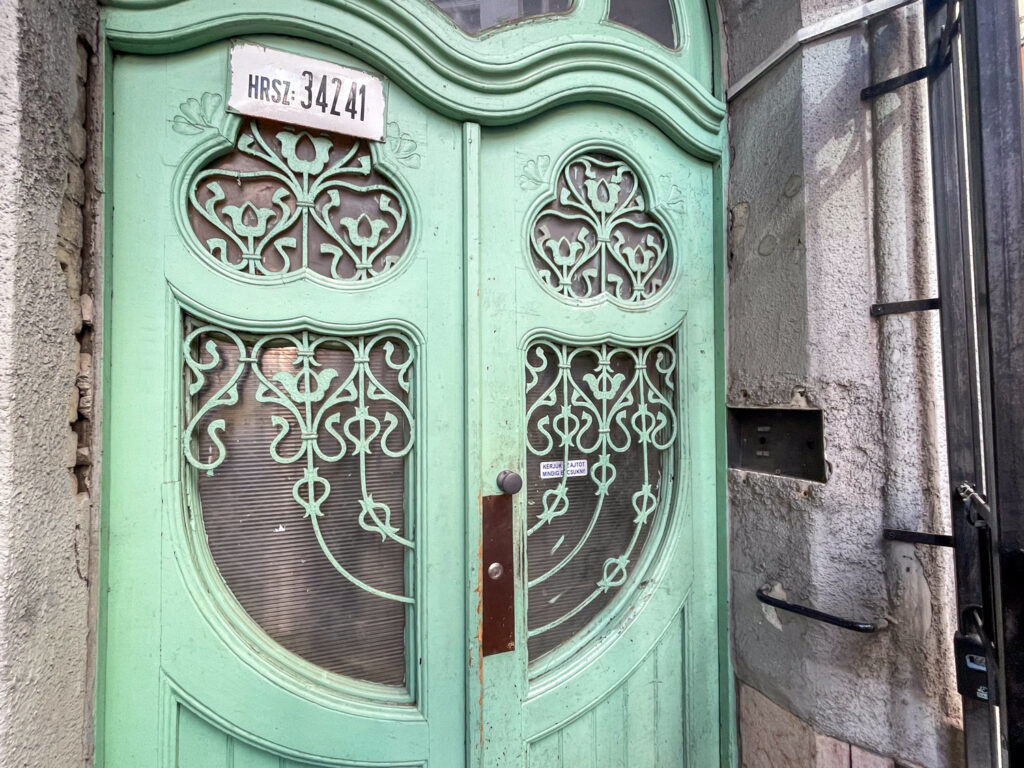
Challenges During World War II
By the late 19th and early 20th centuries, Hungarian Jews sought to integrate into the broader Hungarian state, creating a unique cultural identity that combined their traditions with contemporary aspirations.
Unfortunately, during World War II and under the Arrow Cross regime (the Hungarian Nazis), Hungarian Jews faced mass deportations, with many being sent to labour camps in Ukraine.
While approximately 60% of the Jewish population in Budapest managed to survive, the situation was much more dire outside the capital, where only about 10% of Jews survived.
The Communist Era
The aftermath of the Holocaust left a profound impact on the Jewish community. During the communist era following World War II, the relationship with the Soviet regime was complex and ambivalent.
On one hand, the Soviets liberated Jews from Nazi oppression; on the other, they launched a campaign against the bourgeoisie, which included many Jewish families.
Despite the nationalisation of businesses and assets, there was a facade of freedom of worship, and this period brought about an uneasy hope for a homogenised Hungarian society.
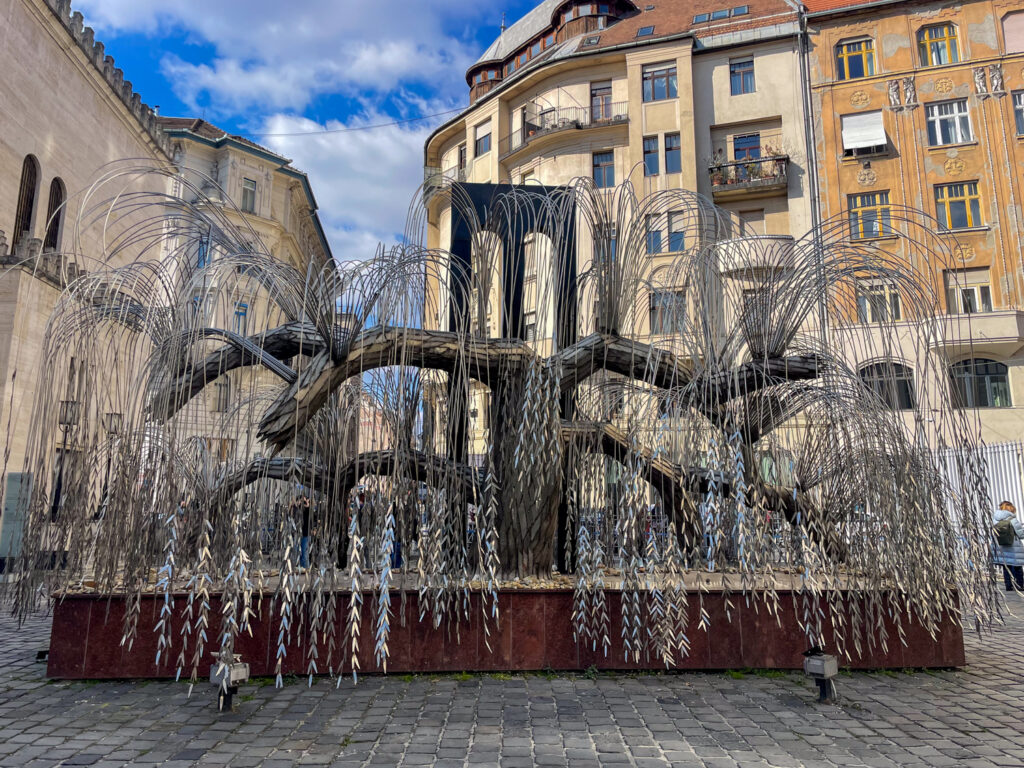
A Resilient Community Today
In the years following the fall of the Soviet regime, from the 1990s onward, Jewish memorials and monuments began to emerge in public spaces, reflecting a renewed acknowledgement and commemoration of the community’s history.
Today, the Jewish Quarter in Budapest is not only a thriving neighbourhood filled with shops, restaurants, and galleries but also a living narrative of resilience and cultural heritage.
To better appreciate these aspects, I totally recommend taking part in a tour of the Budapest Jewish Quarter with a local guide.
The Dohány Street Synagogue: Europe’s largest synagogue
In Budapest, there are many synagogues, but the most famous is the Great Synagogue, situated on Dohány Street. The Great Synagogue was Europe’s largest synagogue when it was built. Currently, it competes with another large synagogue in Uman, Ukraine, which is more modern. Nonetheless, as you can see yourself, the Dohány Street Synagogue remains an impressive structure.
The Great Synagogue was constructed during the Austro-Hungarian Empire, a period significant for the Jewish community. Many Ashkenazi Jews, in fact, immigrated to Hungary, which led to an increase in the Jewish population in the area since Roman times.
This Great Synagogue was the first purpose-built house of worship for the Jewish community in Pest and was constructed between 1854 and 1859. The renowned Viennese architect Ludwig Förster designed the main structure, while Frigyes Feszl, a master of Hungarian romantic architecture, created the Ark of the Covenant.
Services at the synagogue included organ music and a choir, with rabbis delivering their sermons in Hungarian. These details may seem of minor importance, but they were revolutionary at the time and still are today for the most orthodox believers. For this reason, the Dohány Street Synagogue is a symbol of the division between Orthodox and Neolog Judaism.
After the Holocaust, 90% of Jews lived in Budapest. The community haven’t officially split, but today, Jews can choose to attend the Great Synagogue, which follows Neolog rites, or a synagogue with more traditional architecture.
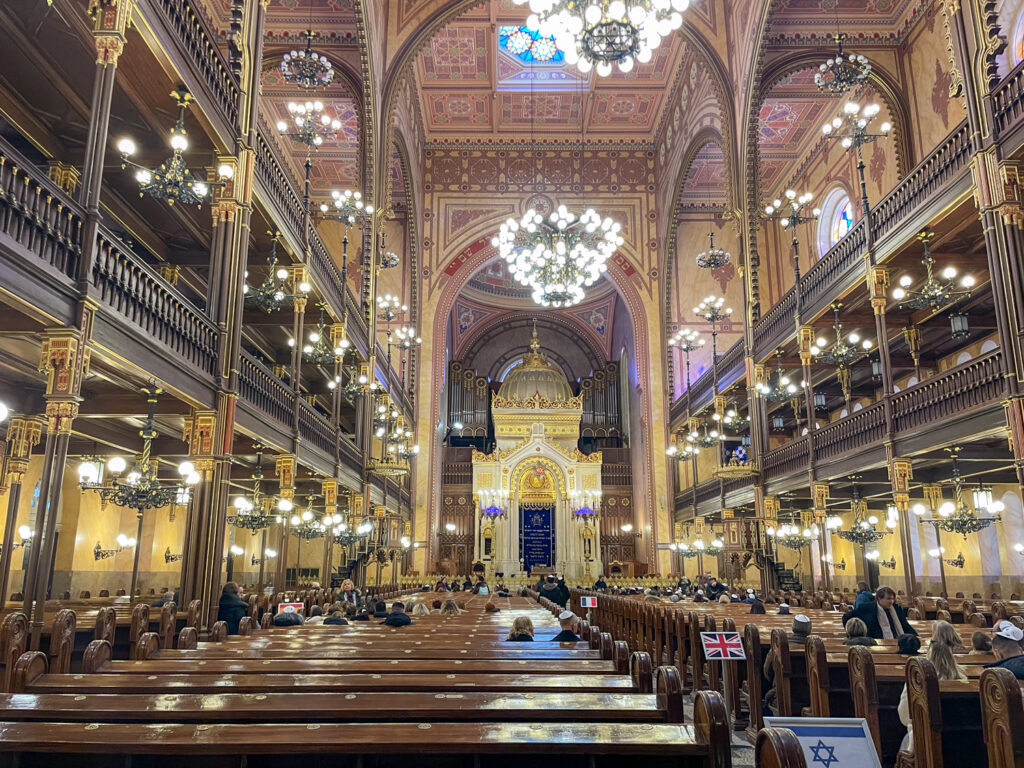
What Neologue Judaism Has To Do With the Dohány Street Synagogue’s Style
As I mentioned, the Great Synagogue in Budapest symbolises the divide between Orthodox and Neolog Judaism. I learned about this schism and Neolog Judaism from my guide Miklós. You can only gain these interesting facts from an insider’s perspective!
So, what is Neolog Judaism? It was a reformist movement among Hungarian Jews in the second half of the nineteenth century to promote their acceptance into Hungarian society.
Jewish people sought to integrate into a predominantly Christian society that was pushing for assimilation. There were similar movements to Neolog Judaism in Europe and North America, but in Hungary, the Reform of Neolog Judaism had fewer restrictions.
Neolog Judaism was also considered very modern and liberal for its time, allowing individuals to choose their own level of observance. Attending the synagogue was encouraged, but it was up to each person whether they prayed at home or not. It’s worth noting that, at that time, Christians had stricter rules!
The Unique Architectural Features of the Great Synagogue
The Dohány Street Synagogue was the first synagogue in Budapest designed with its own architectural concept. It survived both the Nazi regime and communism and eventually, the state-funded its renovation.
This synagogue has several unique features, including the presence of an organ. This element is considered so “modern” that some Orthodox Jews do not visit this synagogue due to the music played there.
I learned about these and the following features from my guide during the tour of the Jewish Budapest. Otherwise, I’d have only been able to admire its beauty and grandeur on my own.
Iron structure and lights
Regarding its architecture, the building has an iron structure, and the light metal columns were quite innovative at the time it was built.
It also boasts numerous light fixtures that were both modern and expensive, reflecting the fact that the Dohány Street Synagogue served as a synagogue for the upper-class Jewish bourgeoisie.
Eclectic Style
The architectural style is an eclectic mix of Neo-Moorish, Neo-Byzantine, and Moorish elements. If you have visited other synagogues, you noticed that the Moorish style was quite popular, as it evokes the “Golden Age” of Sephardic Jews in Spain.
Also, the 19th-century Orientalism movement influenced the Jewish bourgeoisie, who sought to be trendy. Additionally, both Judaism and Islam share similarities, such as the avoidance of images of God, leading to a wealth of decorative designs that do not include portraits.
Traditional Features
In Judaism, it’s the community that makes a place holy. Nevertheless, having a seat in the Great Synagogue also serves as a status symbol. Wealthy individuals purchased seats within the community to fund the synagogue, and you can still see their names on the benches, similar to some Catholic churches.
Key elements of the synagogue include the Holy Ark and an altar housing the Torah. The Budapest community possesses 17 Torah scrolls, some of which are pretty old and are used during special readings. There is also a red light that symbolises God and a women’s gallery, although women generally sit on the lateral sides of the synagogue.
Unusual Features
Among the unusual features of the Dohány Street Synagogue are its basilica-like architecture, with a rectangular shape instead of the usual square, and an altar in the centre. Also, the pulpit to the side is much like in Catholic churches and doesn’t exist in synagogues.
Additionally, the presence of an organ is atypical for a Jewish house of worship, as instrumental music was prohibited during the mourning for the destruction of the Temple. However, music is not entirely forbidden; it is only the act of playing instruments that is prohibited on Shabbat.
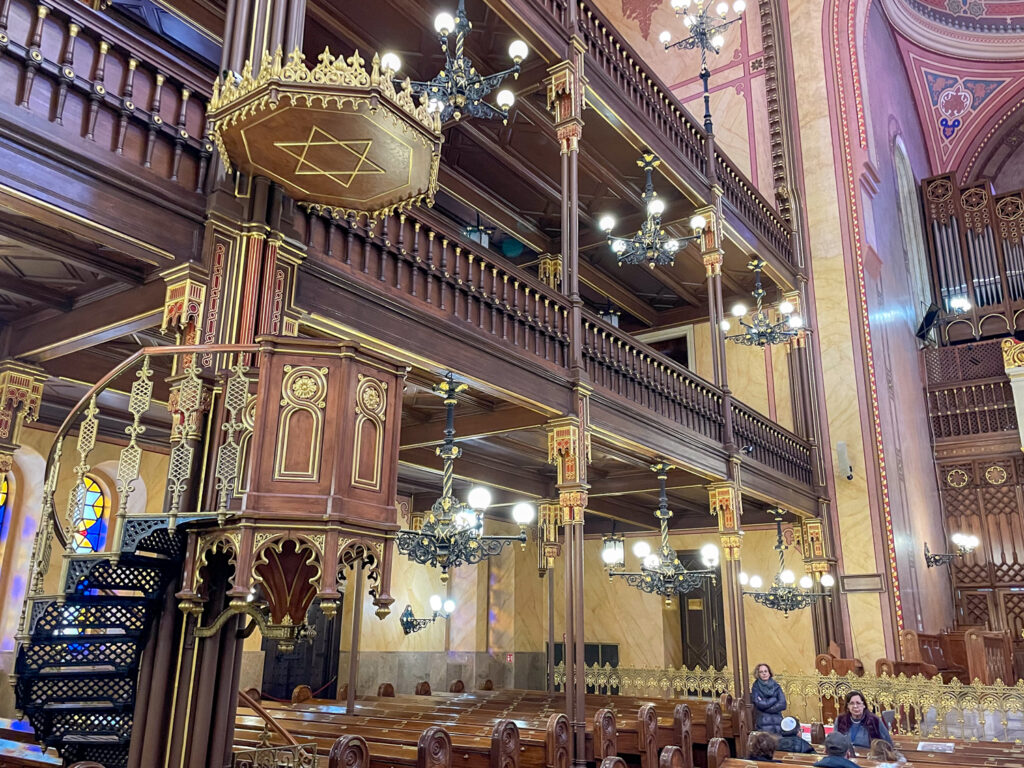
Dohány Street Cemetery and Garden
Behind the Great Synagogue, several monuments honour the memory of Hungarian Jews. From the exterior, you can also see a small cemetery enclosed by a row of arcades.
Initially established as a memorial to Jewish soldiers who fought in WWI, the cemetery later became part of the Budapest ghetto by the end of WWII. When the ghetto was liberated, the bodies of thousands of Jews who died due to the siege or the brutality of the Arrow Cross were buried in the garden.
The victims of the Holocaust are commemorated by the sculpture The Tree of Life, created by Imre Varga in 1991. You can see this impressive metal tree in the garden after visiting the Dohány Street Synagogue.
Nearby in the garden is a stained glass window designed for the Holocaust museum. It depicts fire consuming a snake, symbolising the Nazi regime.
In the garden, you will also find plaques honouring non-Jewish individuals who saved Jews. Most of these rescuers were diplomats who issued fake documents for Jews.
On the other side of the garden is a smaller synagogue used for winter services, which can accommodate around 50 people, with women seated on one side and men on the other. This synagogue also features a hidden organ.

Kazinczy Street Synagogue: A Lesser-Known Architectural Marvel
The Kazinczy Street Synagogue is located at 29–31 Kazinczy Street in Pest. Completed in 1913, the building’s design was influenced by Lechner’s Art Nouveau nationalist architecture from the post-World War I era and the late Viennese Art Nouveau.
After the division between Neolog and Orthodox communities, the Jewish community in Hungary often experienced splits in various cities. However, this was not the case in Budapest. Here, the Orthodox community just built their own traditional synagogue without an organ.
I’m pretty sure you’ll find the Kazinczy Street Synagogue stunning. Many visitors appreciate it even more than the Great Synagogue due to its more traditional design.
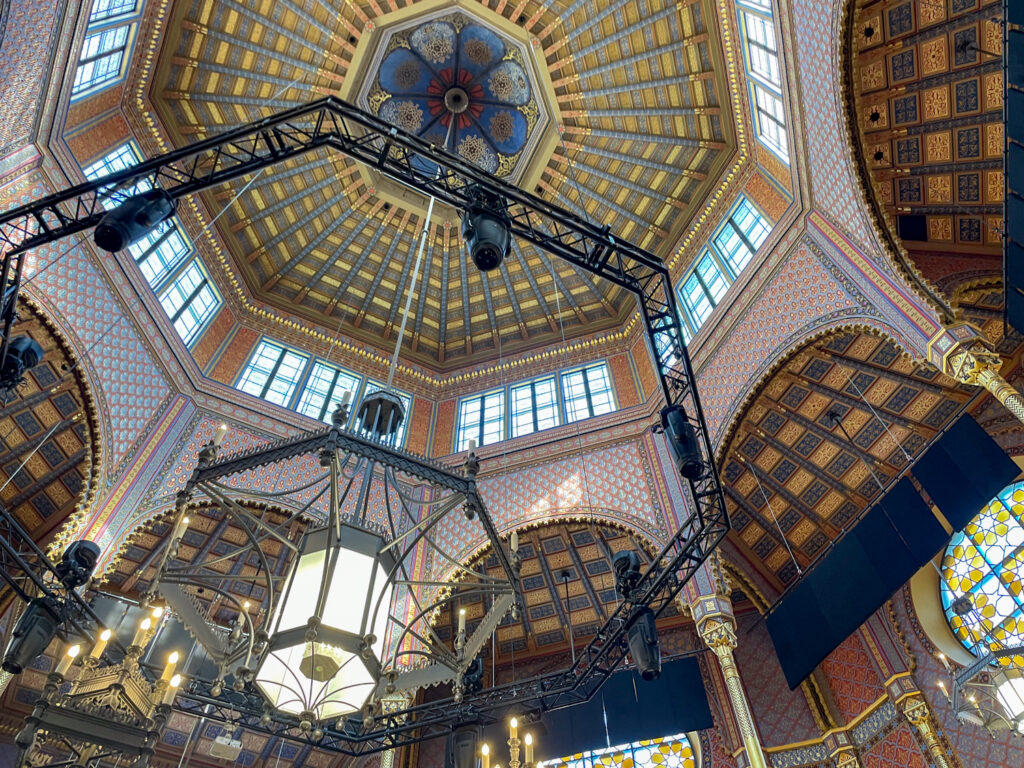
The Decline and Renovation of the Kazinczy Street Synagogue
The Kazinczy Street Synagogue survived World War II but was closed in 1959 due to a decline in congregation attendance and a lack of donations. Although the state provided some funding, it was insufficient for restoration.
In the late 1980s, the building was sold to a company that intended to repurpose it for conferences. It became a historical monument, and restoration efforts began. However, these were suspended when the company went bankrupt.
The building then became state property before being repurchased by the Jewish community, which successfully restored it in 2015 with government funding.
Today, the Kazinczy Street Synagogue is both a place of worship and a cultural centre. An altar and lectern are integrated into the floor for versatility when not used for religious services.

Where to stay in Budapest
Budapest offers a wide range of beautiful hotels to choose from. Hampton By Hilton Budapest City Centre (here my review) is located in the heart of Budapest, just 600 metres from St. Stephen’s Basilica. They offer a delicious breakfast and have a restaurant and a bar on-site. For those looking for a hotel with unique and stunning decor, Stories Boutique Hotel is a 4-star property situated 500 meters away from the Hungarian State Opera. They have a restaurant on-site that serves à la carte, a continental or vegetarian breakfast. If you prefer an aparthotel, Zoya Luxury Residence is an excellent option with units with a coffee machine, a dishwasher, a microwave and parking space.
In conclusion, exploring Jewish Budapest is a profound journey through history and culture. I am grateful to my guide, Budai Miklós, for sharing his insights that truly enriched my experience. If you’re planning to visit, I highly recommend a guided tour to uncover the hidden stories of this remarkable neighbourhood. Now, feel free to leave a comment with your experience, adding your favourite corner of the Jewish Quarter in Budapest.
